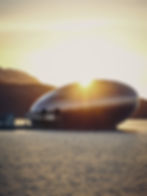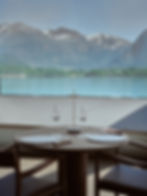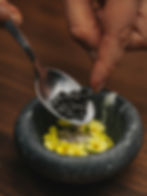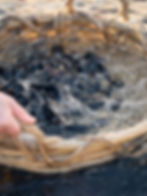Words: Mallory Legg
Given a new cinematic interest in the culinary arts in the wake of productions like The Bear, Hunger, and The Menu, the average person is getting a detailed, albeit dramatised, look into the cutthroat realm of culinary artistry, with Michelin chefs and restaurants striving for perfection. It’s no surprise then, that a new, almost bizarre, food experience has grabbed our attention given its undeniable parallels with Hawthorn, the restaurant that bore the stage for a gritty thriller starring Ralph Fiennes and Anya Taylor Joy.
Iris is Norway's Answer to an Expedition Dining Restaurant

Iris, a new culinary experience in Western Norway, brings a new meaning to ‘waterfront dining’. In fact, Iris prefers the term ‘expedition dining’ to adequately address their concept. A meal consisting of 6 hours, the guests will begin their reservation with a boat trip from Rosendal, stopping halfway at head chef Anika Maden's boathouse on the island of Snilstveitøy for a snack to prepare the palette before heading to the dining room, situated on the largest floating art installation in the world in the middle of Hardanger Fiord. There, aboard The Salmon Eye, guests will undergo a multisensory underwater experience in a minimalistic orb-like room, seemingly made to make two things in the environment incontestably stand out: the exquisite, Michelin-level dishes and the surrounding landscapes of water and mountains which offered inspiration to the installation, the establishment, and the dishes.
Concept and Mission

The entirety of the project has a beating heart fueled by a mission to challenge food industries that contribute to the climate crisis and provide suggestions and education committed to bringing viable and achievable solutions to the public. This starts with the very walls that enclose Restaurant Iris, the Salmon Eye. The Salmon Eye is an installation designed by Kvorning Design, which was initiated by the family behind Eide Fjordbruk, the first and only carbon-neutral certified salmon producer. Its goal is to provide education on the opportunities and challenges of the ‘aquaculture industry’; in short, the Salmon Eye was created to be a center for reflexive thinking and interaction surrounding the Norwegian industry's footprint on the earth and the potentiality for reform.
Iris uses Salmon Eye to push this message even further. With the guidance of head chef Anika Madsen and her passion for wild and exciting ingredients minimizing carbon emissions and food waste, the menu at Iris is an 18-course glimpse into what could be the future of high-end, sustainable, and local dining. But, Iris does come with an eye-watering 3200 kr price tag for the meal, which may deter some from the Norway restaurant.
Norway Gastronomy

The menu is based on seasonality and locality, pushing the boundaries on exciting ingredients often neglected on competitive menus like Iris’, as well as boundaries on mastery and skillfulness of culinary artistry, as the parameters of the produce must not stray from within 500m of the restaurant. This boundary push is, again, out to challenge an entire industry; the menu is an expertly crafted byproduct of that challenge.
‘Dish no. 4: Feeding the Future’

In this dish, Iris identifies and challenges a flaw in the feed being manufactured for fish. Despite having come a long way in producing vegetable feed for carnivorous fish, this feed's main protein is broadly and widely soy-based, encouraging monocultures and continued deforestation in the Amazon. Iris has cultivated a solution to this issue, creating a dish that incorporates proteins that might replace soy: mycelium, chlorella algae, and insect protein paired with young salmon fry.
Final Remarks
Everything that Iris does is well thought out, with critical insight into the industry which it is both a part of and is working to reform. It is a lens through which we can peer to see the innovative potentials for high-end Michelin dining in the wake of a new sustainable way of being that works with the environment rather than against it. While Iris has gained traction and attention for its parallels to ‘The Menu,’ the coincidence stops at the setting, as Iris only encourages the flourishing of nature and its livelihoods.